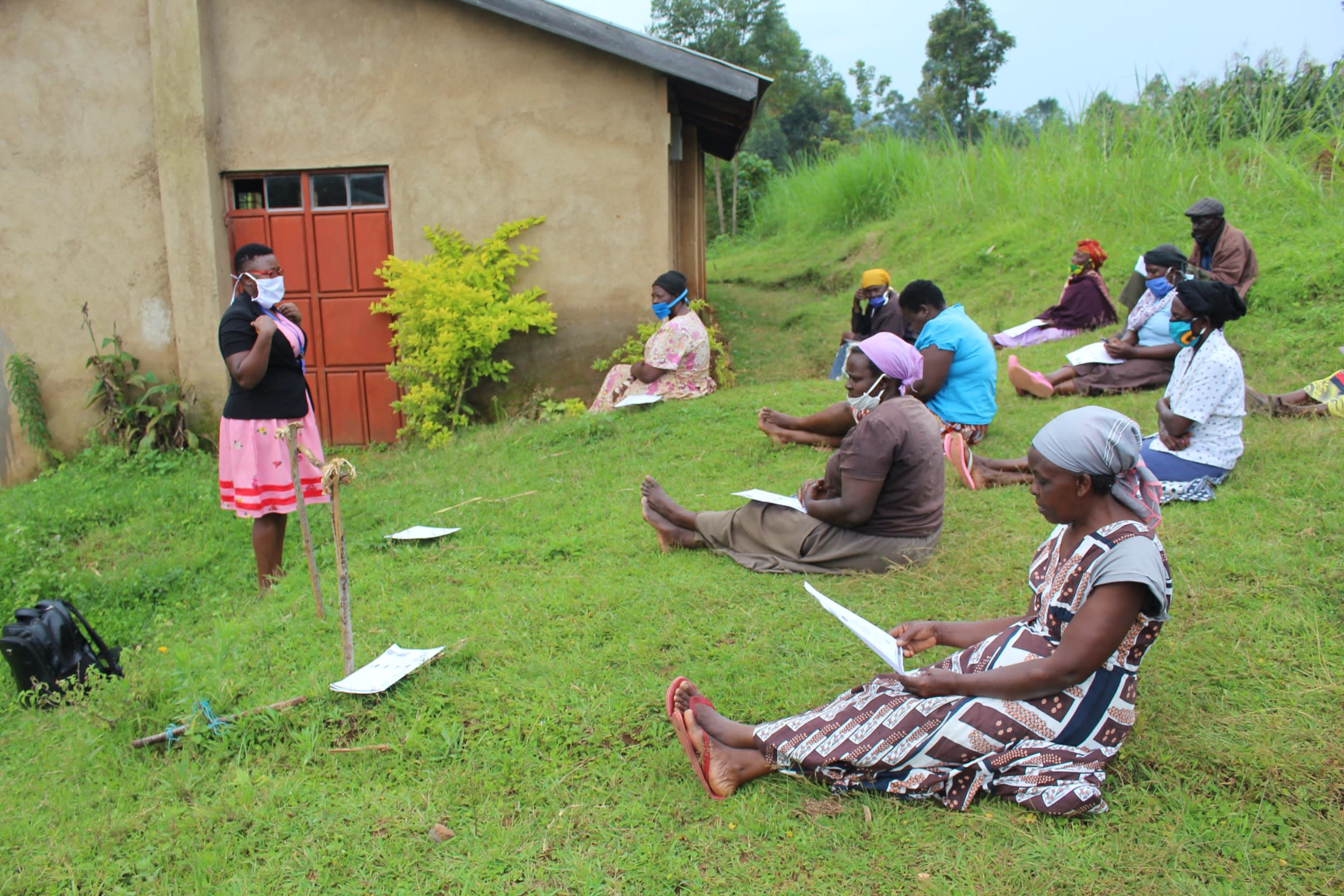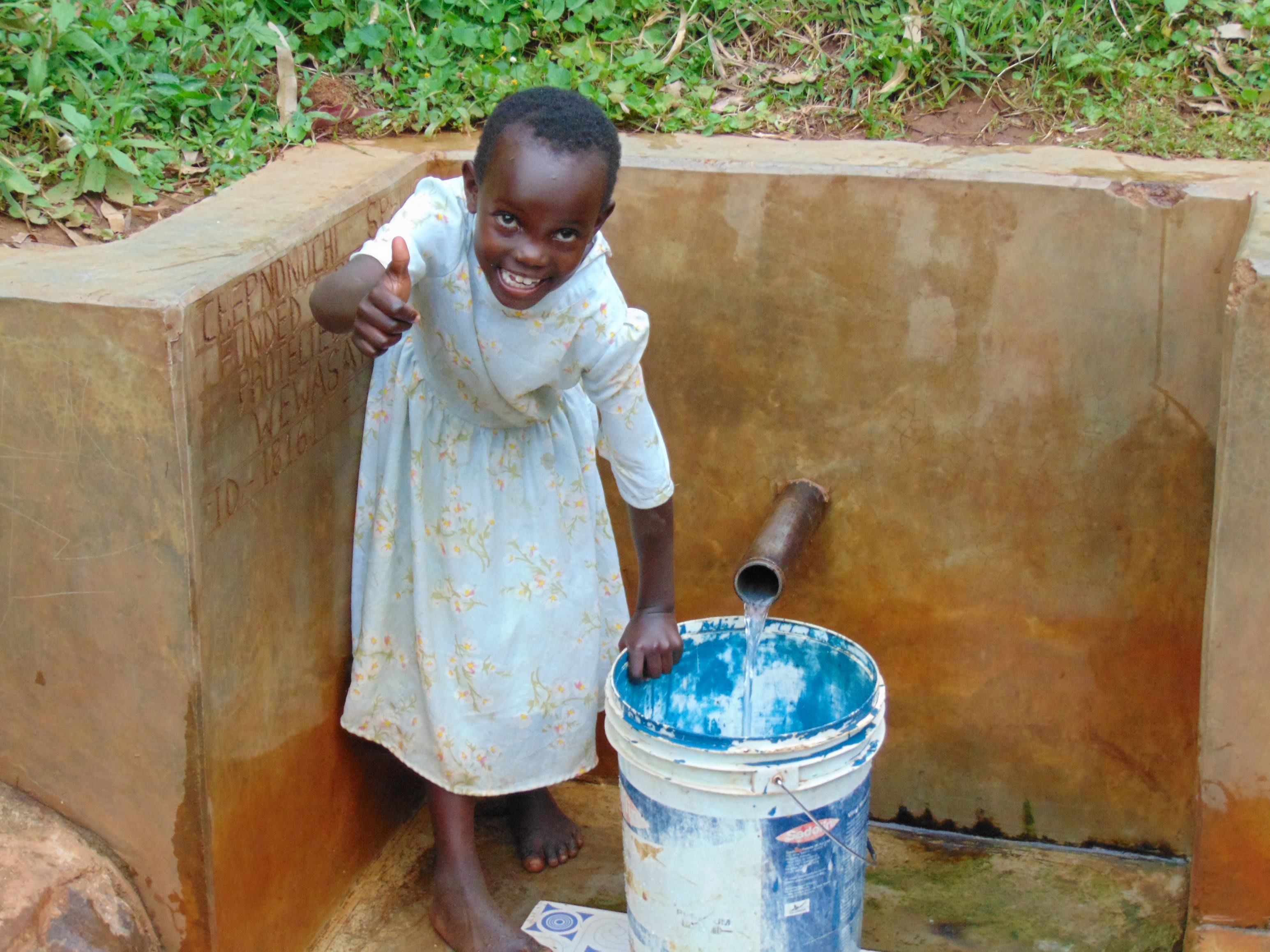Chepnonochi Spring is an unprotected spring that is serving 479 people from 40 households across Chepnonochi Village. It is an unsafe water source and is in need of protection.
Women in this community spend their days digging on their farms, as casual laborers, or tilling their own kitchen gardens. Others are mothers and wives who are busy with household chores like fetching water and preparing food for the children. Some have small-scale businesses where they sell small fish, greens, and tomatoes to their neighbors.
The special thing about people from this community is the genuine love and concern they have for one another.
They share information about development issues among themselves and pull resources together to meet their goals.
They are also hardworking environmentalists who plant trees on their small plots of land. These trees are sold to make a living or are harvested upon maturity to make buildings or furniture for sale.
Water
Chepnonochi Spring attracts a lot of people during the dry spell since it always has water and is near Senende Center. However, in its current state, a lot of time is wasted fetching water from the spring. The entrance to the spring is slippery and muddy, putting people at risk of plunging into the water point as they fill their containers.
There is an improvised plastic pipe inserted into the spring eye to dispense the water. A lot of water is wasted because the pipe is not funneling enough of the spring's water. In its current state, the spring is open to contamination by human waste, animal activity, soil erosion, and proximate farming.
The community members got the contact information of the field officer who implemented a rainwater tank project at Bumuyange Secondary School and called asking for the protection of this spring.
People us a variety of containers, such as jerrycans of different sizes and buckets, to fetch the water. We observed that none of these containers had covers. The water is tapped from this pipe directly into the containers.
The lack of safe water exposes people to diarrheal diseases and other waterborne infections. Users confirmed that they experience coughs are a result of drinking the water.
Some users also spend a lot of money to treat the water either by boiling or with chemicals, such as chlorine.
"As a community, we have battled with waterborne diseases of various kinds due to the unsafe water we get from Chepnonochi Spring. Most of the children have suffered stomachaches and diarrhea in a recurrent manner, more so during the dry spell," Mrs. Jessica Isadia said.
The condition of this spring is expected to change in the near future because the community members have demonstrated willingness to rewrite history by participating in the spring protection project.
Sanitation
We estimate that more than half of households have latrines. Most of the latrine slabs were made of logs or off-cuts from tree bark, while others were smeared using cow dung.
Maintaining cleanliness is hardest during wet seasons. Thus, most of the latrines we saw were smelly and attracted flies. However, a few household latrines were neat and clean.
"The problem is compounded by people who lack latrines and have to rely on the bush or share with the neighbors as the only option," Mrs. Isadia said.
Garbage is mainly kitchen waste that is reused to feed the chickens or household pets. Any excess waste is disposed of in compost pits that are then used to fertilize crops.
Here’s what we’re going to do about it:
Training
Community members will attend hygiene and sanitation training for at least two days. This training will ensure participants have the knowledge they need about healthy practices and their importance. The facilitator plans to use PHAST (Participatory Hygiene and Sanitation Transformation), CLTS (Community-Led Total Sanitation), ABCD (Asset-Based Community Development), group discussions, handouts, and demonstrations at the spring. One of the most important topics we plan to cover is the handling, storage, and treatment of water. Having a clean water source will be extremely helpful, but it is useless if water gets contaminated by the time it’s consumed. Handwashing will also be a big topic.
Training will also result in the formation of a committee that will oversee operations and maintenance at the spring. They will enforce proper behavior around the spring and delegate tasks that will help preserve the site, such as building a fence and digging proper drainage. The fence will keep out destructive animals, and the drainage will keep the area’s mosquito population at a minimum.
Sanitation Platforms
On the final day of training, participants will select five families that should benefit from new latrine floors.
Training will also inform the community and selected families on what they need to contribute to make this project a success. They must mobilize locally available materials, such as bricks, clean sand, hardcore, and ballast. The five families chosen for sanitation platforms must prepare by sinking a pit for the sanitation platforms to be placed over. All community members must work together to make sure that accommodations and food are always provided for the work teams.
Spring Protection
Protecting the spring will ensure that the water is safe, adequate and secure. Construction will keep surface runoff and other contaminants out of the water. With the community’s high involvement in the process, there should be a good sense of responsibility and ownership for the new clean water source.
Fetching water is predominantly a female role, done by both women and young girls. Protecting the spring and offering training and support will, therefore, help empower the female members of the community by giving them more time and efforts to engage and invest in income-generating activities.

 Protected Spring
Protected Spring
 Rehabilitation Project
Rehabilitation Project










































